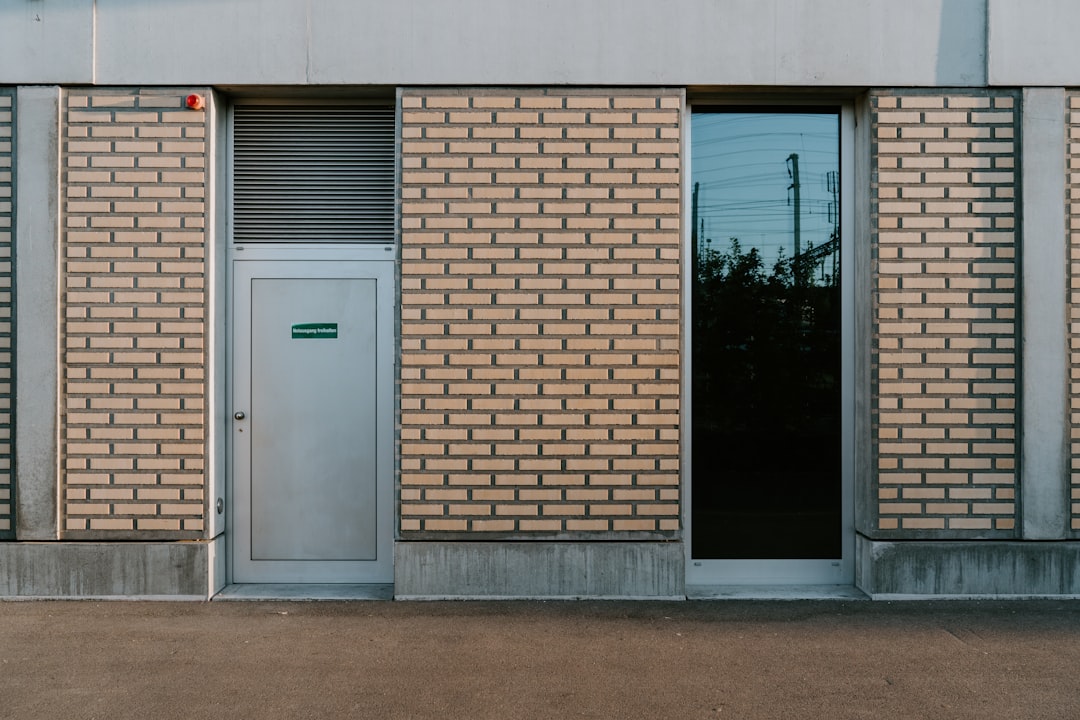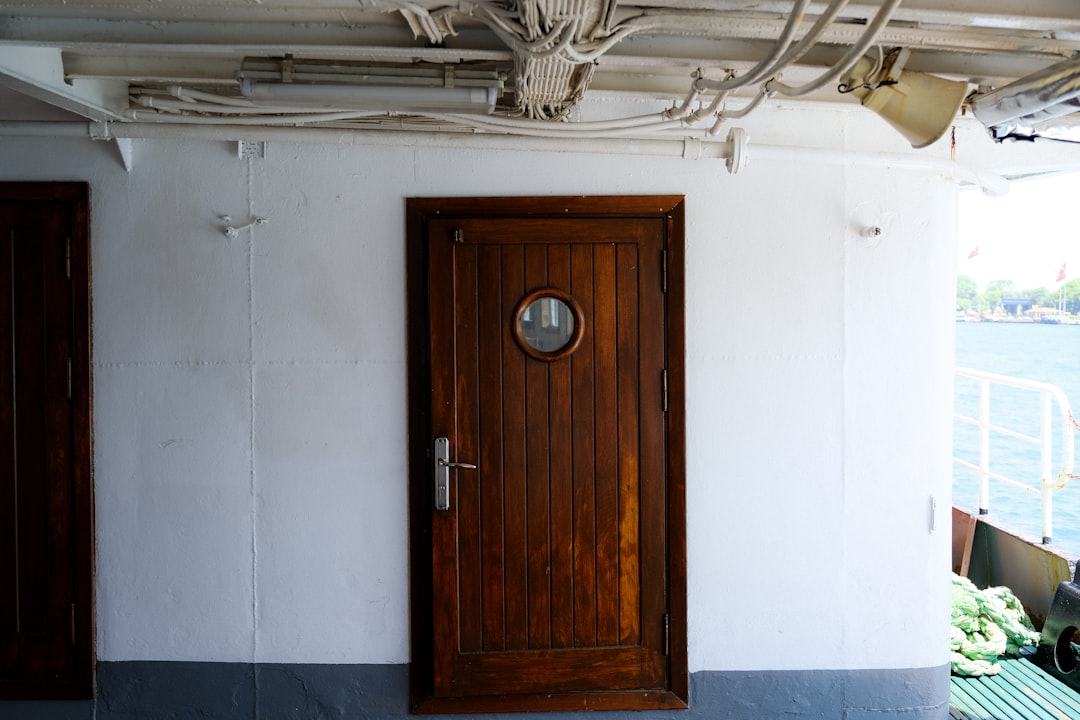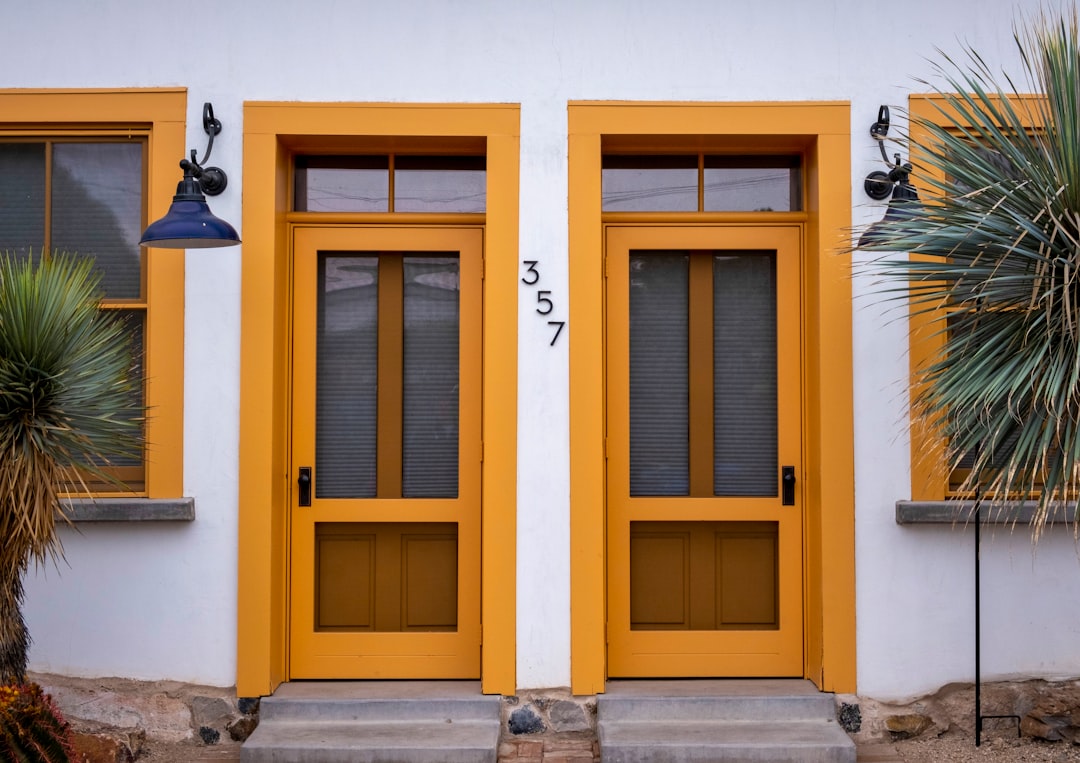

Engage prospects with a scan and streamline customer engagement with FREE QR code marketing tools by Sona – no strings attached!
Create a Free QR CodeFree consultation

No commitment

Engage prospects with a scan and streamline customer engagement with FREE QR code marketing tools by Sona – no strings attached!
Create a Free QR CodeFree consultation

No commitment
QR codes have become a vital tool for bridging offline engagement with online action in today’s digital landscape. For door installation services, QR codes provide a seamless and efficient way to facilitate client interactions, speeding up service bookings, simplifying quote requests, and connecting property owners with essential information quickly. This capability directly tackles the issue of lost high-value prospects due to missed inquiries or untracked engagement, giving businesses a crucial competitive advantage.
By linking printed materials and on-site signage with online appointment systems or detailed product catalogs, QR codes elevate both residential and commercial door installation services. Homeowners or facilities managers can access quick answers about installation costs, timelines, or providers by scanning, offering a practical solution to the challenge of anonymous web visits and lost sales. When traditional touchpoints fail to capture meaningful engagement data, QR-enabled interactions bring every prospect into focus.
This guide explains how forward-thinking operators can use QR code solutions to replace outdated methods with connected, measurable, and high-converting customer journeys that address the ongoing challenges of the door installation services industry.

QR codes bridge the gap between physical touchpoints and digital outcomes, making it easier to achieve business goals like rapid quote generation, streamlined customer education, and high-quality lead capture. In door installation, paper brochures, business cards, and manual sign-up sheets often sit on countertops without creating a direct path to action. When a prospect must type a URL or wait for a callback, intent decays and competitors gain ground.
Replacing analog friction with scan-to-action experiences turns interest into immediate engagement. A QR on a yard sign can route a passerby to a 60-second quote intake, a QR on a showroom placard can open a catalog filtered by door type or material, and a QR on a service vehicle can capture emergency repair requests after hours. Each scan becomes data you can act on, enriching your CRM and shortening the time from curiosity to conversion. For teams syncing leads and follow-ups, see Sona’s blog on HubSpot integration.
Here’s how to succeed:
Replacing paper with scan-to-book or scan-to-learn experiences reduces friction and improves brand reputation. Modern platforms like Sona QR support dynamic code updates, identity enrichment, and CRM integrations, turning every offline interaction into a measurable step in your pipeline.

Door installation services depend on timely responses, clear information, and transparent pricing. Yet many interactions start offline, then drop off before the customer reaches a website or books an appointment. QR codes close this gap by creating a fast, app-free bridge from signage, proposals, and brochures to digital actions like quote requests and service scheduling.
This matters even more in urgent scenarios. When a warehouse roll-up door fails or a homeowner’s entry door sticks, prospects do not want to fill out long forms or navigate phone trees. A single scan can pre-fill their location, capture the issue type, and start a digital triage, which gives your team an advantage in speed and professionalism. For contractor teams, this aligns with best practices in contractor marketing.
Every physical asset becomes a data-enabled gateway. With consistent QR deployment, door installation firms can prove ROI on print media, prioritize high-intent inquiries, and orchestrate follow-ups with precision.

Door installation businesses juggle quote generation, product education, site surveys, and post-install support. QR codes offer flexible formats that meet these needs while reducing friction for customers and teams. The key is to choose the format that matches the action you want and the environment where scanning happens.
Static codes are fine for stable destinations like a warranty PDF. Dynamic codes are recommended for campaigns that require edits, experiments, or deep analytics. They support A/B testing landing pages, rotating offers, and segment-specific experiences without needing to reprint.
For door installation firms, web links to forms and vCards for contacts are the most commonly used formats, followed by pre-filled SMS for emergency service and Wi-Fi access in showrooms or large job sites. Sona QR supports all formats in a unified dashboard, making it easy to standardize best practices across teams.

Growth happens when your brand appears at the precise moment a prospect has a question or intent. QR codes help you turn passive impressions into measurable engagement across the environments where door installation buyers already look for answers. The goal is to place QR codes in locations that capture curiosity and convert it into action.
Beyond visibility, think about the surrounding context. A yard sign near an active project should lead to a short quote path, while a showroom placard might route to a product comparison tool. Match your QR promise to the moment and you will convert more scans into booked assessments.
Placement should align with common questions like cost, availability, and warranty coverage. Position QRs at eye level, use high-contrast frames, and add a concise CTA that sets expectations for what happens after the scan.

Successful door installation marketing depends on quickly converting interest into a booked assessment or a qualified quote. Many firms lose momentum because prospects must make a phone call during business hours or browse a generic website without guidance. These QR use cases capture intent early and route people to the right next step.
They also enrich attribution. When you assign a unique code to each surface, you know whether the scan came from a showroom, a jobsite sign, a trade show banner, or a direct mail piece. That makes future budgeting smarter and follow-up more relevant.
Each of these touchpoints turns real-world attention into trackable digital signals. Over time, scan data reveals which neighborhoods, venues, or partner locations produce the best leads, so you can target future efforts efficiently.
Every scan is a data point that signals intent and context. In door installation, audience value varies widely, from casual price checkers to facility managers seeking multi-unit replacements. By deploying unique QR codes at different touchpoints, you can segment prospects automatically and tailor follow-ups with precision.
This approach lets you speak differently to a homeowner who scanned a warranty sticker versus a property manager who scanned a commercial services placard. You can prioritize calls, customize ad creative, and pre-load email content that reflects what they scanned and when they scanned it.
With Sona QR, each code becomes a smart entry point that not only collects scans but also builds rich profiles over time. This makes campaign optimization a continuous process instead of a quarterly guess.
QR codes are connectors, joining the worlds of print, field operations, and digital marketing. When deployed consistently, they enable real-time engagement and data collection across every surface, from a brochure in a property manager’s office to a CTA on a service vehicle. The result is a unified view of what content drives action and where to invest next.
Integrations amplify the value. Scans can trigger CRM updates, send confirmation emails, and enroll contacts in nurture sequences. Instead of hoping a visitor will reach out later, you invite them to act now and measure the outcome end to end.
QR codes serve as the offline onramp to your digital marketing engine. With a centralized platform like Sona QR, you can manage all codes, monitor performance, and sync data with your CRM and ad platforms, ensuring that every channel contributes to a cohesive growth strategy.
Launching a QR initiative is straightforward when you anchor it to clear goals and a tight feedback loop. Start with a single use case that aligns with your sales motion, such as scan-to-book for residential assessments or scan-to-service for commercial repairs. Then expand across surfaces as you validate results.
Consistency is critical. Standardize your QR design, set naming conventions for codes, and create a cadence for reviewing analytics. This turns early wins into a repeatable playbook that your team can deploy in every market you serve.
Door installation teams have historically struggled to connect offline engagement with revenue. A passerby notices your yard sign, a property manager keeps your brochure, a homeowner reviews your proposal. Without a traceable bridge, you cannot attribute results accurately or double down on what works. QR codes change that by turning every surface into a measurable touchpoint.
Advanced analytics connect scans to pipeline. With identity resolution and CRM integration, you can see how a showroom scan leads to a scheduled assessment, a proposal, and a closed invoice. This makes campaign decisions data-driven and defensible, which is especially valuable when budgets are tight. For modeling across touchpoints, read Sona’s take on multi-touch attribution.
Sona QR captures real-world engagement and Sona extends this with identity resolution and attribution, helping you connect scans to revenue and make QR activation a core part of your performance marketing strategy.
As your program matures, small optimization choices compound into major gains. Standardize tracking parameters, keep landing pages fast, and align CTAs with the user’s context. Invest in staff training so technicians, showroom reps, and installers can confidently present QR options to customers.
Creative placements often unlock unexpected returns. For example, a small QR on a city permit poster can funnel curious neighbors into your quote pipeline, while a QR on a post-install door hanger can drive maintenance plan sign-ups that extend lifetime value.
You can generate and track your first QR codes for free with Sona QR. Start creating QR codes for free, create a few high-impact codes, and review your first week’s data to validate the approach before scaling.
QR codes are a modern strategy for connecting physical assets, customer inquiries, and post-install touchpoints. For door installation services, they eliminate common frustrations like missed leads, delayed responses, and unmeasured ROI. When every surface becomes a scannable gateway, you shorten the path from interest to action and gain visibility across the entire buyer journey.
The payoff goes beyond convenience. QR programs help you segment audiences by behavior, accelerate booking and quoting, and attribute revenue to the assets that actually drive results. This feeds a continuous improvement loop that strengthens both marketing and operations.
By integrating QR codes across the door installation lifecycle, businesses modernize workflows, prevent valuable leads from being lost, and gain insights that power growth. With Sona QR and Sona.com, you have the tools to capture demand at the source, orchestrate personalized follow-ups, and connect scans to pipeline. Start with a focused use case, instrument it for data, and let the results guide your expansion.
QR codes have revolutionized door installation services by transforming access management into a seamless, efficient, and secure process. From simplifying client onboarding to enhancing on-site access control, QR codes enable door installation companies to deliver faster service, reduce errors, and provide a superior customer experience. Imagine instantly granting secure access to authorized personnel without cumbersome keys or codes—streamlining operations while boosting client satisfaction.
With Sona QR, you gain the power to create dynamic, trackable QR codes tailored for door installation workflows. Update access permissions in real time, monitor scans for improved security, and link every interaction to actionable insights that drive business growth. No more manual updates or lost access—just smarter, safer, and more responsive service.
Start for free with Sona QR today and unlock the full potential of QR codes to elevate your door installation services and secure lasting client trust.
The steps include deploying QR codes on multiple surfaces like signage and vehicle wraps, directing clients to online quote requests or catalogs, tracking engagement metrics, designing QR codes with clear calls to action, and integrating scan data with CRM systems to accelerate follow-ups and bookings.
While specific costs vary, QR codes allow prospects to quickly access detailed pricing information and request quotes through scan-to-action forms, which simplifies cost inquiries and speeds up the estimate process.
QR codes placed on yard signs, brochures, or vehicle wraps provide instant access to local service providers' contact details, booking forms, and product catalogs, making it easy to connect with reliable door installation services nearby.
QR codes on showroom placards or brochures can open filtered catalogs featuring different door types by material, energy rating, and fire rating, such as steel, fiberglass, or fire-rated doors.
Professional services benefit from QR codes by enabling faster response times, simplifying customer education, reducing lost leads, improving data tracking, enhancing customer engagement with dynamic content, and providing measurable ROI on marketing efforts.
Use Sona QR's trackable codes to improve customer acquisition and engagement today.
Create Your FREE Trackable QR Code in SecondsJoin results-focused teams combining Sona Platform automation with advanced Google Ads strategies to scale lead generation

Connect your existing CRM

Free Account Enrichment

No setup fees
No commitment required

Free consultation

Get a custom Google Ads roadmap for your business






Launch campaigns that generate qualified leads in 30 days or less.
